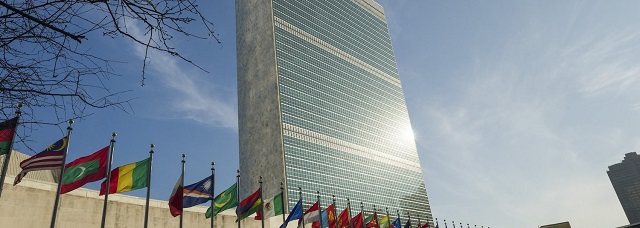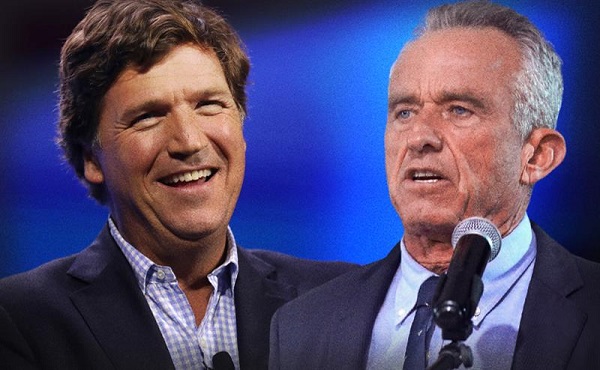International
Can We Finally Talk About United Nations Funding?


David Clinton 
Billions of dollars disappear into the black hole. Not much value comes out the other end
No area touched by government policy should be off-limits for open discussion. It’s our money, after all, and we have the right to wonder how it’s being spent. Nevertheless, there’s no shortage of topics that, well, aren’t appreciated in more polite company. Until quite recently, I somehow assumed that Canada’s commitments to the United Nations and its many humanitarian programs were among those restricted topics. I had my own deep reservations, but I generally kept my thoughts to myself.
Then the Free Press published a debate over US funding for the UN. I know that many subscribers of The Audit also read the Free Press, so this probably isn’t news to most of you. If questioning UN funding was ever off limits, it’s officially open season now.
The Audit is a reader-supported publication. To receive new posts and support my work, consider becoming a free or paid subscriber.
The only defense of the organization to emerge from the debate was that America’s spooks need the surveillance access made possible by the UN headquarter’s New York address, and the city needs the billions of dollars gained from hosting the big party. No one, in other words, could come up with a single friendly word of actual support.
For context, Canada doesn’t bill for parking spots around Turtle Bay in Manhattan. And our spies are not up to the task of bugging hospitality suites anywhere nearby.
How much money do Canadian taxpayers spend on the United Nations? According to data from Canada’s Open Government resource, UN-targeted grants cost us at least $3.7 billion between 2019 and 2022. That number could actually be a lot higher since it’s not always easy to identify spending items as specifically UN-related.
Of that $3.7 billion, more than $265 million went to administrative and headquarters operations. Those administrative grants included $209 million directed to the “United Nations Organization” and officially described as “Canada’s assessed contribution to the United Nations Regular Budget”. Membership dues, in other words.
So what do we get for those dues? Arguably, nothing at all. Because the actual work of the UN happens through their specific programs – which were covered by the other $3.5 billion we contributed.
Unfortunately, those contributions are often misspent. Take as an example the eight million or so dollars Canada sends each year to the United Nations Interim Force in Lebanon (UNIFIL). Since 1978, UNIFIL’s 10,000-strong contingent’s only job has been to:
“confirm Hezbollah demilitarization, support Lebanese army operations against insurgents and weapon smuggling, and confirm Israeli withdrawal from Lebanon, in order to ensure that the government of Lebanon would restore its effective authority in the area”.
It’s no secret how splendidly that worked out. Hezbollah cheerfully spent the best part of the past two decades building some of the most robust military infrastructure on earth. And all under the direct supervision of UNIFIL.
Then there’s the disturbing relationship between United Nations Relief and Works Agency for Palestine Refugees in the Near East (UNRWA) and both Hamas and Hezbollah. As I’ve already written, by their own admission, Global Affairs Canada completely missed (or chose to ignore) that one. UNRWA cost Canadians $55 million between 2019 and 2022.
It’s true that some UN peacekeeping missions from decades back saw success, like operations in Namibia, Mozambique, Sierra Leone, East Timor, and El Salvador. But the failures were, to say the least, noticeable. Those included Rwanda, Bosnia and Herzegovina, Somalia, Angola, Haiti, and Darfur. And all that’s besides the accusations of widespread, systemic sexual abuse committed by peacekeepers just about anywhere they go. The peacekeeping model’s value proposition is far from proven, but the financial costs are right out there in the open.
Besides their regular happens-to-the-best-of-us failures, the UN has carefully cultivated their own unique brand of corruption. In 2005, Paul Volcker’s Independent Inquiry Committee (IIC), for example, reported on widespread corruption and abuse associated with the UN’s Oil-for-Food program for Iraqi citizens.
The United Nations Educational, Scientific and Cultural Organization (UNESCO) has long been associated with corruption, cronyism, and a general lack of financial control. But to be fair, those claims are very much in line with accusations regularly leveled against the UN as a whole.
Most Canadians are agreeable to sharing their collective wealth and expertise with those around the world who are less fortunate. But we’d be far more effective at it by creating our own programs and bypassing the rotting corpse of the United Nations altogether. That is, after all, what Global Affairs Canada is supposed to be doing.
While I’ve still got your attention, there’s one other United Nations-y thing that I’d like to discuss. While researching this post, I accessed official data representing all UN Security Council and General Assembly resolutions since 2000. Fascinating stuff, I assure you. But it didn’t turn out the way I’d expected.
You see, for years I’ve been hearing about how UN resolutions are overwhelmingly focused on condemnations of Israel – to the point where Israel takes up the majority of the organization’s time.
In fact, there were far too many spurious and gratuitously hostile anti-Israel resolutions. And I defer to no one in my contempt for each one’s dishonesty and hypocrisy. But unless there’s something very wrong with the official UN data on resolutions, condemnations of Israel take up no more than a small minority of their time.
Specifically, of the 1,594 General Assembly resolutions from the past quarter century, just 60 or so targeted Israel. And the Security Council faced a total of 1,466 resolutions over that time, of which only somewhere in the neighborhood of 55 concerned everyone’s favorite colonial-settler, apartheid, space laser-firing, and weather-controlling oppressor.
The cesspool that is the modern UN is bad enough on its own merits. There’s no need to manufacture fake accusations.
International
RFK Jr. tells Tucker how Big Pharma uses ‘perverse incentives’ to get vaccines approved

From LifeSiteNews
By Matt Lamb
Kennedy defended his decision to fire all 17 members of the Advisory Committee on Immunization Practices, which he decried as a tool used to “rubber stamp” vaccines.
The vaccine approval process is a “bundle of perverse incentives” since pharmaceutical companies stand to make billions of dollars in revenue from it, Secretary of Health and Human Services Robert F. Kennedy Jr. told Tucker Carlson recently.
Kennedy appeared on Carlson’s show yesterday to discuss a variety of issues, including the potential link between autism and vaccines and his overhauling of the vaccine advisory committee at the Centers for Disease Control and Prevention last month.
Twenty years ago, Bobby Kennedy was exiled from polite society for suggesting a link between autism and vaccines. Now he’s a cabinet secretary, and still saying it.
(0:00) The Organized Opposition to RFK’s Mission
(6:46) Uncovering the Reason for Skyrocketing Rates of Autism… pic.twitter.com/g8T8te3kNC— Tucker Carlson (@TuckerCarlson) June 30, 2025
Kennedy began by explaining that Big Pharma has been targeting academic journals to ensure its products receive favorable reviews.
“The journals won’t publish anything critical of vaccines … there’s so much pressure on them. They’re funded by pharmaceutical companies, and they’ll lose advertising and revenue from reprints,” Kennedy said.
Kennedy then noted that Big Pharma will “pay to get something published in these journals,” before accusing industry leaders of pushing drugs on doctors and of hiring “mercenary scientists” to manipulate data until their product is deemed safe and effective.
The entire complex is broken due to the “perverse incentives,” he lamented.
Later in the interview, Kennedy defended his decision to fire all 17 members of the Advisory Committee on Immunization Practices (ACIP) in June, which he decried as a mere tool to “rubber stamp” vaccines.
It served as “a sock puppet for the industry that it was supposed to regulate,” Kennedy exclaimed, citing conflicts of interest for the overwhelming majority of its board members.
This sort of “agency capture” explains the lucrative nature of vaccines, he added.
— Matt Lamb (@MattLamb22) July 1, 2025
Kennedy then summarized the “perverse” process as follows:
First of all, the federal government often times actually designs the vaccine, [the National Institutes of Health] would design it, would hand it over to the pharmaceutical company. The pharmaceutical company then runs it … first through [the] FDA, then through [the] ACIP, and gets it recommended.
If you can get that recommendation you now got a billion dollars in — at least — revenues by the end of the year, every year, forever. So, there was a gold rush to add new vaccines to the schedule and ACIP never turned away a single vaccine … that came to them they recommended, and a lot of these vaccines are for diseases that are not even casually contagious.
Kennedy further pointed to the Hepatitis B shot for newborns as an example of how the industry has been corrupted.
In 1999, the CDC “looked at children who had received the hepatitis vaccine within the first 30 days of life and compared those children to children who had received the vaccine later — or not at all. And they found an 1,135% elevated risk of autism among the vaccinated children. It shocked them. They kept the study secret and manipulated it through five different iterations to try to bury the link,” he said.
“We want to protect public health,” Kennedy explained, but “these vaccines … can cause chronic disease, chronic injuries that last a lifetime.”
Censorship Industrial Complex
Global media alliance colluded with foreign nations to crush free speech in America: House report

From LifeSiteNews
By Dan Frieth
The now-defunct ad coalition GARM shared insider data and urged boycotts of Twitter to punish non-compliance with its ‘harmful content’ standards, a US House Judiciary report shows.
A new report from the U.S. House Judiciary Committee has shed light on what it describes as an alarming collaboration between powerful corporations and foreign governments aimed at suppressing lawful American speech.
The investigation focuses on the Global Alliance for Responsible Media (GARM), an initiative founded in 2019 by the World Federation of Advertisers (WFA), which the committee accuses of acting as a censorship cartel.
According to the report, GARM, whose members control about 90 percent of global advertising spending, exploited its market dominance to pressure platforms like Twitter (now X) into compliance with its restrictive content policies.
A copy of the report can be found HERE.
The committee highlighted how GARM sought to “effectively reduce the availability and monetization” of content it deemed harmful, regardless of public demand for free expression.
Documents obtained by the committee reveal direct coordination between GARM and foreign regulators, including the European Commission and Australia’s eSafety commissioner.
In one exchange, a European bureaucrat encouraged advertisers to leverage their influence to “push Twitter to deliver on GARM asks.”

Similarly, Australia’s eSafety Commissioner Julie Inman Grant praised GARM’s “significant collective power in helping to hold the platforms to account” and sought updates to “take into account in our engagement and regulatory decisions.”

Robert Rakowitz, GARM’s co-founder and initiative lead, expressed a chilling goal in private correspondence, stating that silencing President Donald Trump was his “main thing” and likening the president’s speech to a “contagion” he aimed to contain “to protect infection overall.”

The report outlines how GARM distributed previously unavailable non-public information about Twitter’s adherence to its standards, fully aware this would prompt advertisers to boycott the platform if it failed to conform. According to the House report, Rakowitz admitted that this information sharing was designed to encourage members not to advertise on Twitter.
He went as far as to draft statements urging GARM members to halt advertising on the platform, telling colleagues he had gone “as close as possible” to saying Twitter “is unsafe, cease and desist.”
Despite the widespread impact of GARM’s actions, including what the committee describes as coerced “concessions” from platforms, internal polling circulated within GARM showed that “66 percent of American consumers valued free expression over protection from harmful content.”
Still, GARM pressed ahead with efforts to “eliminate all categories of harmful content in the fastest possible timing,” ignoring consumer preferences.
Even after GARM dissolved in 2024 amid legal challenges, similar efforts persisted.
A new coalition led by Dentsu and The 614 Group briefly attempted to revive GARM’s mission before disbanding under scrutiny. Gerry D’Angelo, a former GARM leader, reflected on the initiative’s overreach, stating, “Did we go too far in those first rounds of exclusionary restrictions? I would say yes.”
The Judiciary Committee warns that despite GARM’s downfall, the threat of collusion to stifle free expression remains.
It pledged to continue oversight to defend “the fundamental principles” of the Constitution and ensure that markets, not coordinated censorship efforts, shape the flow of information in the digital age.
Reprinted with permission from Reclaim The Net.
-

 Health20 hours ago
Health20 hours agoRFK Jr. Unloads Disturbing Vaccine Secrets on Tucker—And Surprises Everyone on Trump
-

 Business9 hours ago
Business9 hours agoElon Musk slams Trump’s ‘Big Beautiful Bill,’ calls for new political party
-

 Business2 days ago
Business2 days agoCanada Caves: Carney ditches digital services tax after criticism from Trump
-

 Alberta1 day ago
Alberta1 day agoAlberta judge sides with LGBT activists, allows ‘gender transitions’ for kids to continue
-

 Crime20 hours ago
Crime20 hours agoNational Health Care Fraud Takedown Results in 324 Defendants Charged in Connection with Over $14.6 Billion in Alleged Fraud
-

 Censorship Industrial Complex8 hours ago
Censorship Industrial Complex8 hours agoGlobal media alliance colluded with foreign nations to crush free speech in America: House report
-

 Crime2 days ago
Crime2 days agoSuspected ambush leaves two firefighters dead in Idaho
-

 Business2 days ago
Business2 days agoMassive government child-care plan wreaking havoc across Ontario






